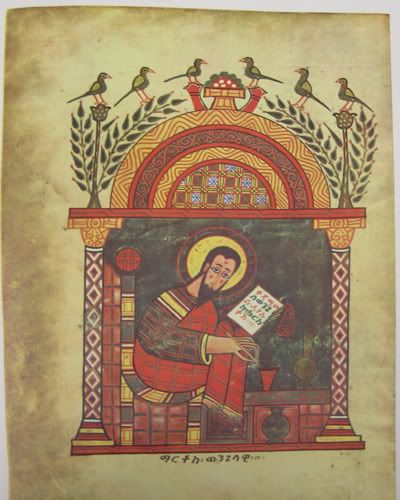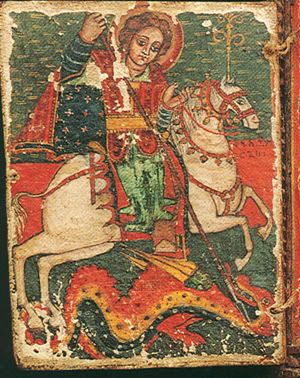It is the easiest thing in the world for commerce to export a new Western technique. It is infinitely harder for a Western poet or saint to kindle in a non-Western soul the spiritual flame that is alight in his own.—Arnold Toynbee, A Study of History
Although I would wager that there is one distinct culture whose soul was lit up by Western art.
This example requires another factor. Which is Christianity.
To continue with the theme of Ethiopian Biblical art, I mentioned briefly in a previous post that Ethiopian Christians maintained their faith while surrounded by pagans and Muslims by referring continuously to the Old Testament as verification of God, and as a way to behave in exemplary (or should I say, in a chosen) fashion, like the chosen people.
Well, there is another huge endeavor that they undertook. Mainly to translate the stories and messages that they received from the Bible into visual form, or art.
This was perhaps the one way where they struggled to keep in solidarity with the rest of the Christian world. While their spiritual world was mostly contained within the Old-New Testament interaction, their art, and interpretation of this spiritual world, relied considerably on outside influence.
From the very first available artworks, namely manuscripts, their influence was clearly the Byzantine world.
Over the centuries, as monks and other strong believers traveled to Jerusalem and sometimes as far as Rome, they started to imitate the art of the various periods of those regions.
Astute Kings also called for European, mostly Italian, artists and artisans to teach their artists the techniques and methods to depict Biblical figures.
Throughout the centuries, especially from the 15th to the 18th centuries, which could be called the "Golden Age" of Ethiopian Biblical art, it is evident that these instructions and examples were widely and very successfully used.
You can click on picture to see larger versions.
 |
Byzantine model
 |
 |


